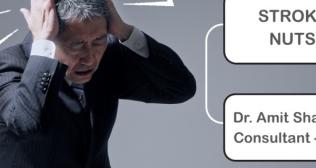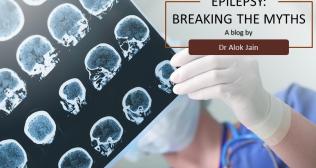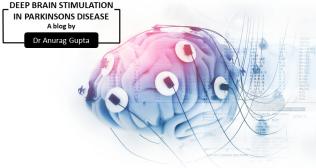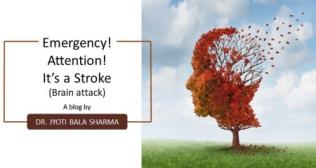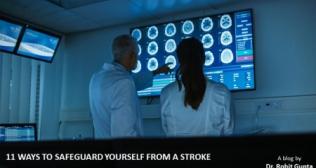
Bell’s Palsy: Causes, Symptoms, and Recovery
Facial expressions form a vital part of our communication. Whether it's smiling at a loved one or reacting in surprise, our facial muscles do a lot more than we realize. So, when one side of the face suddenly becomes weak or paralyzed, it can be deeply alarming. This is precisely what happens in Bell's palsy.
Though often temporary, this neurological condition can have a significant emotional and physical impact. Understanding its causes, identifying early symptoms, and pursuing timely treatment are essential to a smoother and faster recovery.
What is Bell’s Palsy?
Bell's palsy is a sudden, temporary weakness or paralysis of the muscles on one side of the face. It occurs due to inflammation or compression of the facial nerve (cranial nerve VII), which controls facial movements. Though the exact cause is often unclear, Bell's palsy is not caused by a stroke or transient ischemic attack (TIA), though the symptoms may sometimes resemble those conditions. In most cases, the weakness is temporary, and full recovery is likely within weeks to a few months.
Often referred to as idiopathic facial paralysis, Bell's palsy typically presents with a rapid onset. The affected individual may wake up with a drooping mouth, an inability to close one eye, and distorted facial expressions. While the condition can affect individuals of any age, it is most common among people between the ages of 15 and 60.
Bell’s Palsy Causes
Despite extensive medical research, the precise cause of Bell's palsy remains unknown in many cases. However, it's widely believed that viral infections play a significant role. The herpes simplex virus (HSV-1), which causes cold sores, is the most commonly suspected trigger. Other viruses that have been associated with Bell's palsy include:
- Varicella-zoster virus (chickenpox and shingles)
- Epstein-Barr virus (mononucleosis)
- Cytomegalovirus
- Adenovirus (respiratory infections)
- Rubella
- Influenza B
These viruses may lead to inflammation and swelling of the facial nerve as it travels through the narrow bone canal in the skull. The inflammation can compress the nerve, disrupting the signals between the brain and facial muscles.
Additional risk factors that may contribute to the development of Bell’s palsy include:
- Pregnancy, particularly in the third trimester
- Diabetes mellitus
- High blood pressure
- Obesity
- Family history of Bell’s palsy
- Upper respiratory infections, such as the flu or the common cold
Bell’s Palsy Symptoms
The symptoms of Bell’s palsy usually appear suddenly and reach their peak within 48 to 72 hours. These signs typically affect only one side of the face and may vary in severity.
Common Bell's palsy symptoms include:
- Sudden weakness or paralysis on one side of the face
- Drooping of the mouth and eyelid
- Inability to close the eye on the affected side
- Drooling
- Decreased sense of taste, especially on the front two-thirds of the tongue
- Increased sensitivity to sound (hyperacusis) in one ear
- Pain or discomfort around the jaw and behind the ear
- Headache
- Difficulty with facial expressions, such as smiling or frowning
- Dry eye or excessive tearing in one eye
While these symptoms may mimic other neurological conditions, Bell’s palsy is typically diagnosed by ruling out other causes such as stroke, Lyme disease, or tumors.
Diagnosing Bell’s Palsy
Diagnosis is primarily clinical, based on the physical presentation and medical history. There is no single test that definitively confirms Bell's palsy. A healthcare provider may conduct a neurological exam to assess the extent of facial weakness and rule out other conditions. Additional diagnostic tools may include:
- Blood tests to rule out infections or autoimmune conditions
- Magnetic Resonance Imaging (MRI) or CT scans to exclude tumors, stroke, or skull fractures
- Electromyography (EMG) to measure the electrical activity of facial muscles and nerve conduction
Timely diagnosis is important because early treatment can significantly improve recovery outcomes.
Bell’s Palsy Treatment
In most cases, Bell’s palsy improves on its own, and significant recovery is seen within three to six months. However, early medical intervention can speed up recovery and reduce the risk of complications. Effective Bell's palsy treatment usually includes:
1. Corticosteroids
The most common and effective treatment for Bell’s palsy is the use of oral corticosteroids such as prednisone. When treated within 72 hours of symptom onset, these anti-inflammatory drugs reduce swelling around the facial nerve and enhance the likelihood of complete recovery.
2. Antiviral Medications
Though their effectiveness remains debated, antiviral drugs such as acyclovir or valacyclovir may be prescribed if a viral cause is strongly suspected, especially in combination with corticosteroids.
3. Eye Protection
One of the biggest concerns in Bell’s palsy is eye care. Since the eye on the affected side may not close properly, it is vulnerable to dryness, irritation, and injury. Protective strategies include:
- Using lubricating eye drops or ointments
- Wearing an eye patch, especially at night
- Taping the eye shut while sleeping
4. Physical Therapy
Facial exercises and physical therapy may help restore muscle tone and coordination. Gentle massage and facial muscle retraining can prevent muscle stiffness and promote healing.
5. Pain Management
Over-the-counter pain relievers like ibuprofen or acetaminophen can help manage headaches or facial discomfort. Warm compresses may also provide relief from pain and muscle stiffness.
6. Surgery (Rare)
Surgical decompression of the facial nerve was once considered a treatment, but due to the risks involved and the high rate of natural recovery, it is rarely performed today.
Recovery and Prognosis
The outlook for Bell’s palsy is generally positive. Most people begin to improve within a few weeks, and 70% to 85% of patients experience full recovery within three to six months. The remaining may have some degree of lasting weakness or complications.
Factors that influence the recovery rate include:
- Severity of the initial facial paralysis
- Timing of treatment initiation
- Age and overall health
- Presence of underlying health conditions like diabetes
Complications, though rare, can include:
- Persistent facial muscle weakness
- Abnormal facial movements (synkinesis)
- Excessive tearing or eye dryness
- Crocodile tears (tearing while eating)
Preventive Tips and Long-Term Management
While Bell’s palsy cannot always be prevented due to its sudden onset, managing risk factors can be beneficial. Steps to reduce the risk or improve outcomes include:
- Managing chronic conditions like diabetes and hypertension.
- Maintaining good hygiene to reduce viral infections.
- Strengthening the immune system with a healthy diet, regular exercise, and adequate sleep.
- Avoiding excessive stress which can weaken immune function.
- Protecting the face and ears from cold exposure, which some believe may trigger episodes.
Long-term follow-ups with a neurologist or ENT specialist may be required if symptoms persist beyond six months. In such cases, Botox injections or surgical interventions may be explored to correct residual facial asymmetry.
Conclusion
Bell’s palsy is a distressing but usually temporary condition that affects facial nerve function. With prompt diagnosis and early treatment, most individuals can expect a full recovery. Recognizing the signs early, seeking immediate care, and adhering to the treatment plan significantly enhance the likelihood of regaining full facial movement. Though the sudden onset can be unsettling, understanding the condition and being proactive about treatment allows patients to face the journey with confidence.
For someone experiencing facial drooping or weakness, consult a healthcare provider immediately. Bell’s palsy might not be preventable, but it is treatable; and with time, most people bounce back fully, regaining not just facial movement but also the comfort of self-expression.











